Papers by Petra Košťálová
Svět literatury, Jul 9, 2024

HISTORICKÁ SOCIOLOGIE
The paper deals with the repatriation wave of Armenians from the Diaspora to Soviet Armenia in th... more The paper deals with the repatriation wave of Armenians from the Diaspora to Soviet Armenia in the years 1946–1948. It was the largest targeted and systematic immigration back to the Republic of Armenia, perceived primarily as a motherland and Promised Land; the migration wave and its impact could be considered in the frame of Hebrew aliyahs, or “ascension upward” (toward the Holy City). Returning from exile is called nergaghth in Armenian. The collective memory of Soviet Armenia has usually depicted this immigration as a success, a rescue of a nation threatened by genocide and an afflux of “new blood”; however, the repatriation was perceived as disappointment and historical injustice by repatriates and considered one of the reasons for tensions between the Diaspora and its motherland. After 1956, the majority of repatriates returned to their original host countries; those who remained in Armenia are (even after several generations) called by the pejorative term akhpar.
Historická sociologie, 2023

Archiv orientální
The objective of this article is to explore the metanarrative of Armenian discourse, in Armenian ... more The objective of this article is to explore the metanarrative of Armenian discourse, in Armenian called łaribut’iwn or pandxtut’iwn, generally translated as the concept of exile and uprootedness, and its profound significance in the Armenian historical and literary discourse. Motif of exile is closely associated with the idea of homeland (Erkir). Being in łaribut’iwn describes the state of nostalgic yearning for something unachievable – lost homeland, past glory, abandoned family etc.; oscillating between inner and outer exile, between real or symbolic one, between the experience of deportations, wars and massacres or self-alienation. This paper focuses especially on the so-called panduxt and łarib period of mass migrations from the Armenian Erkir (today’s Eastern Anatolia) to west and on the medieval reflection of forced deportations and laments. Primary sources as Armenian chronicles and colophons dating from 16th–17th period are analyzed.
Parrésia: ročenka pro východní křesťanství, 2018
Život a dílo jednoho z nejslavnějších trubadúrů Kavkazu se stalo nejen zdrojem inspirace pro mnoh... more Život a dílo jednoho z nejslavnějších trubadúrů Kavkazu se stalo nejen zdrojem inspirace pro mnoho následovníků této pěvecké-ašughské neboli ášigské-tradice, ale i předmětem studia a výzkumu četných badatelů, filologů a literárních vědců 20. a 21. století. Období, v němž Sajat-Nova žil a tvořil, tj. 18. století, je poněkud paradoxně pokládáno už za sklonek éry kavkazských trubadúrů a také za temné období arménských dějin, za "čas plný smutku"; přesto je však dílo právě tohoto ašugha považováno za nejslavnější vůbec a jeho texty i melodie jsou dodnes živé. Svým životním osudem symbolicky propojil dějiny všech tří hlavních zemí Kavkazu, tj. Arménie, Gruzie a dnešního Ázerbájdžánu. Čím více se toho
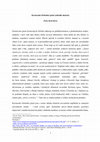
Parrésia: ročenka pro východní křesťanství 13/14, 2019
Dochované písně kavkazských léčitelů odkazují na předkřesťanskou a předislámskou tradici, najdeme... more Dochované písně kavkazských léčitelů odkazují na předkřesťanskou a předislámskou tradici, najdeme v nich však také ohlasy těchto nových náboženství, která přišla do této oblasti ve druhém, respektive osmém století. Hlavní zpěvák či recitátor (léčitel, šaman) se v textech obrací k tzv. pánu nemocí, tj. k personifikované postavě, která vnáší chaos do zavedeného řádu světa skrze zranění nebo nemoc. Písně mají za cíl vrátit narušený řád zpět, tj. přeměnit chaos opět v řád, "napravit stav věcí"-oženit neženaté, uzdravit nemocné apod.: "Zajisti sňatek pro všechny, jichž se to týká, ó matko, královno všech, provdej všechny, které jsou k svatbě, ožeň všechny, kteří jsou na ženění", říká se v jedné modlitbě.1 Na základě tradičních představ přicházejí nemoci, známé jako "pánové" nebo také "andělé" (gruz. batonebi, angelozebi) s vyšším posláním-pocházejí údajně z kraje za Černým mořem a žádný člověk, u něhož "zaklepou na okno", by se jim neměl protivit. Nepřijetí nebo odpor vůči nemoci její průběh v lidovém podání ještě zhoršoval; jemné zacházení a vlídné přijetí (zpěv, hudba, jídlo, sváteční výzdoba) měly naopak zajistit rychlé uzdravení nemocného.2 Správné "přivítání"
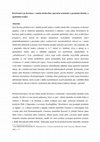
Slovanský Přehled , 2022
Článek je zaměřen na popis procesu šíření křesťanství v regionu jižního Kavkazu. S využitím texto... more Článek je zaměřen na popis procesu šíření křesťanství v regionu jižního Kavkazu. S využitím textové analýzy některých primárních pramenů a zejména literatury sekundární si klade za cíl seznámit čtenáře alespoň v základních obrysech s průběhem christianizace Arménie a Gruzie na přelomu 3. a 4. století a s postupným přijetím křesťanství místními vládnoucími dynastiemi. Během tří století, tj. mezi 4. a 7. stoletím, se rozvinula nesmírně bohatá literární tradice psaná arménskou, gruzínskou a potažmo i kavkazsko-albánskou abecedou; z nichž arménština a gruzínština zůstaly dosud živými jazyky svých církví – arménské apoštolské a gruzínské pravoslavné. Nejstarší zapsané legendy ve staré arménštině (grabaru) a staré gruzínštině, vyprávějící o životě a skutcích svatého Řehoře Osvětitele a sv. Ninó, vykazují mnoho společných rysů; hlubší analýza těchto legend o věrozvěstech může poukázat na původní shodné kořeny, ale i na následný odlišný vývoj daný politicko-kulturním zázemím. V tomto „zakladatelském“ období, pro něž se v rámci arménské kultury vžilo označení Zlatý věk, se ustavila většina topoi platných v pozdějších staletích – koncept svaté smlouvy, země zaslíbené a jejích mučedníků.
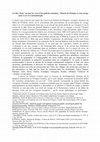
Transponticae: Revue et collection d’études littéraire et culturelle sur la mer Noire / Journal and book series for Black Sea literary and cultural studies, 2022
L'article vise à décrire une partie de l'oeuvre de Siméon de Pologne, voyageur arménien de début ... more L'article vise à décrire une partie de l'oeuvre de Siméon de Pologne, voyageur arménien de début de XVIIème siècle, en se concentrant plus précisément sur sa perception de voyage entre Lviv et Constantinople (bien que ce ne soit qu'une petite partie de ses voyages) et sur la notion de la Mer Noire en général. Siméon a passé dix ans à voyager à travers l'Empire ottoman et l'Italie (visitant Constantinople, Caire, Jérusalem, Alep, Diyarbakir, Split, Venise, Rome). Il a voyagé pendant la relative pax ottomanica entre 1608-1618 (après la fin de la soidisant Longue Guerre entre les Ottomans et les Habsbourgs et avant le début des guerres polono-ottomanes, qui tombent dans la même période que le début de la guerre de Trente Ans, donc en 1620-1621). Bien que pour Siméon l'expérience du pèlerinage (ouk't) aux Lieux Saints arméniens à Jérusalem et au monastère de St. Jean de Baptiste dans la ville anatolienne de Moush était absolument essentiel, il ne peut pas être considéré comme un pèlerin « classique », car son voyage a été beaucoup plus long en il ne suivait des ittinéraires traditionels (il est resté longtemps dans de nombreux endroits, où il a essayé de vivre, de travailler, de faire des affaires etc.). Il avait forcément plus d'occasions de se familiariser avec la réalité quotidienne sur les places au-delà de la frontière. Son Journal de voyage ou Ułegrut'yun en arménien 1 contient aussi d'informations (parfois très détaillées) concernant l'histoire, la géographie et l'ethnographie des lieux visités, ainsi que ses impressions et sentiments personnels et subjectifs (accentués dans ses colophones 2). Il voyait le monde exclusivement à travers le prisme de sa propre communauté religieuse (c'était son topos récurrent), parallèlement il décrivait les relations des Arméniens avec ses voisins. Ainsi, Siméon dessine une sorte de microcosme des villes, des villages, des routes des caravanes et des monastères en tant que les lieux de rencontre entre les Arméniens, Turcs, Tatares,

Studies in Oriental Sources
Long-standing tradition of ukht or sacred pilgrimage – multifaceted phenomenon which appeared not... more Long-standing tradition of ukht or sacred pilgrimage – multifaceted phenomenon which appeared not only in Armenian Apostolic Church of course – emerged already in first centuries after adoption of Christianity, developed throughout Middle Ages both in Armenia, Cilicia and worldwide Diaspora and finally reached its peak of popularity, followed by a certain decline (according to testimony of contemporary sources as Simeon of Poland) during 16th and 17th centuries. Simeons’ Travel Accounts show a certain decay of Armenian pilgrimmage to traditional sites as Rome and Santiago de Compostella, caused on the one hand by political instability in the region of Anatolia and Levant, on the other hand by lack of central authority (the fall of Cilician Kingdom in 1375, the transfer of Catholicosate back to Great Armenia in 1441, the „Isfahan capture“ of Armenian catholicoi at the very beginning of 17th century etc.). Nevertheless, the pilgrim status of sacred places as Jerusalem or more local sa...
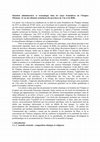
Archiv Orientalni/Oriental Archive, 2014
The article deals with the administrative and economic situation on the periphery of Ottoman Empi... more The article deals with the administrative and economic situation on the periphery of Ottoman Empire, namely concentrating on the idea of functioning of state institutions, the central power impact on the province and local conditions are concerned. The study is focused on the historical text analysis and past reconstruction. The analysis is based on primary sources originating from the region of Eastern Anatolia near Lake Van (16th and 17th century) and written by Armenian chroniclers from the School of Bitlis and others. Texts of chroniclers are invariably embedded in social and historical context of that period and they provide a specific point of view of Armenian religious minority living in Ottoman Empire and Persia (millet-i Ermeni), characterised by dhimmi status, dhimmi mentality and its confessional identity (Armenian Apostolic Church). Texts of chronicles are focused especially on the population of Christian reaya (subjected population) and their everyday life. The socio-economic structures, which determine the everyday reality and metaphorically the way of thinking of the community, are studied as well as the importance of Armenian Church (Hayastaneayts Arakhelakan Yekeghetsi), whose autonomy played a significant role in the construction of Armenian nation and in the transmission of collective memory and traditions.
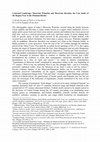
Revue des études slaves, 2022
The traditionally cross-border region of Moravian Walachia, which almost exactly corresponds with... more The traditionally cross-border region of Moravian Walachia, which almost exactly corresponds with actual political boundaries between Czech Republic and Slovakia (close to the borders of Hungaria and Austria), had its historical experience with Ottoman Empire in longue durée. A sort of fortified march, located in the West Carpathian Mountains between rivers Morava and Váh, was placed (throughout 16th, 17th and the beginning of 18th century) very close to the Ottoman border, being target of frequent raids and attacks across the line. Although the enemy figure described in sources of that period took the shape of many forms and identities, it acquired the general form of “Tatar” and “Turk” as the reflection of alterity itself. The region of Central Europe underwent a great metamorphosis from the late Middle Ages until the period of the National Revival, changing identities in time and space – nevertheless, some of these attributes remained as topoi (antemurale myth, mountain passes seen as bulwark, brigands as guardians of faith and rural people etc.) and contributed to the maintenance of regional Walachian identity.
Walachia was considered a country of mountains, rebels, brigands and Protestants. Due to its mountain passes it was perceived also as the gate to the kingdom of Hungary (seen through the eyes of Central and Western Europe). Walachia acquired the reputation of potentially dangerous and rebel country, according to the wide range of contemporary sources. The same perception could be traced from the view of emic perspective, focusing on the same attributes (but this time seen exclusively as positive features) – attributes as the emphasis on faith of forefathers, existence of specific temperament ascribed to highlanders, their tendency to patriarchal life, their notion of honour, specific sense of humour, their approach to life usually lacking respect to authorities etc. All these above mentioned characteristics, codified in contemporary chronicles, folksongs and ballads from the region of Walachia, led to the emergence of stereotypical image of highlanders (Walachians) and their enemies (Turks), which has entered a broader context of Central Europe and significantly affected this region throughout turbulent phases of 17th century till 19th century, when nationalism began to be born through the romantic visions of “warrior nations” and their neighbours.
Cestovatelské zápisky Simeona Polského, arménského jáhna ze Lvova, představují jedno z nejvýznamn... more Cestovatelské zápisky Simeona Polského, arménského jáhna ze Lvova, představují jedno z nejvýznamnějších děl novověké arménské literatury vůbec. Nejedná se pouhé zachycení jeho cesty do Osmanské říše v letech 1608-1618, ale i o mnohdy detailní a živý popis tamějšího života, přičemž se autor zaměřuje zejména na každodenní život křesťanských menšin. Jeho putování je na závěr doplněno i několika dobovými kolofony, které ilustrují situaci ve Lvově a bezprostředním okolí na sklonku dvacátých a ve třicátých letech 17. století.
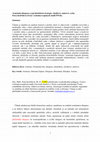
Národopisná revue, 2018
Článek je zaměřen na analýzu řemesel a profesí, které se objevovaly v průběhu novověku a moderníh... more Článek je zaměřen na analýzu řemesel a profesí, které se objevovaly v průběhu novověku a moderního věku v rámci jednotlivých arménských komunit a diasporických center. V jejich případě lze vysledovat určitý příklon k některým typům profesí, které následně determinovaly i sociální status a postavení na společenském žebříčku. Vlivní arménští kupci (chodžové) vystupovali nejen jako prostředníci, propojující díky svému minoritnímu postavení hned několik kultur zároveň, ale i jako mecenáši a filantropové, sponzorující nejprve arménskou apoštolskou církev a později i první generace arménských obrozenců. Jejich takřka monopolní pozice na poli obchodu s hedvábím nebo v oblasti zlatnictví a šperkařství jim napomohla vytvořit mezinárodní obchodní sítě, jejichž dopad se projevil jak v západoevropských centrech, tak i na Dálném Východě. Soudě dle zpráv dobových cestovatelů byl podíl arménské městské elity v osmanských a perských městech dost výrazný; představovali (z hlediska evropských autorů) tzv. viditelnou menšinu, k níž odkazuje většina referenčních děl z té doby a jejíž obraz se díky frekventovaným popisům stal nedílnou součástí evropského diskursu, týkajícího se Orientu, potažmo křesťanského Orientu. Arménské kupecké dynastie tzv. amirů se v 19. století staly hybným motorem osmanské industrializace; Arméni v roli sarrafů (bankéřů) garantovali půjčky sultánů i evropských bank.

Czech-Armenians relations: a brief historical survey Armenian studies in Czech Republic became mo... more Czech-Armenians relations: a brief historical survey Armenian studies in Czech Republic became more widely known toCzech public in recent years. Following up the long tradition of Oriental studies ingeneral, a newly re-established research centre was opened at the Department ofEast-European Studies at Charles University, aiming to cooperate with other colleagues.After long and heated discussions, Czech Republic decided on (albeit nonofficial) recognition of Armenian Genocide and supports initiatives to prevent suchviolence in future. Several monographs dealing with this subject were published recently.And finally, despite the fact that the Czech Republic has no historical experience with the presence of Armenian diaspora before the year 1990, well establishedand coherent Armenian community exists here now and – especially in Prague –shows a high degree of integration into Czech majority. Already two generations ofCzech Armenians are following their identity strategies while preservi...
Slovanský přehled 101/1 , 2015
Cestovatelské zápisky Simeona Polského, arménského jáhna ze Lvova, představují jedno z nejvýznamn... more Cestovatelské zápisky Simeona Polského, arménského jáhna ze Lvova, představují jedno z nejvýznamnějších děl novověké arménské literatury vůbec. Nejedná se pouhé zachycení jeho cesty do Osmanské říše v letech 1608-1618, ale i o mnohdy detailní a živý popis tamějšího života, přičemž se autor zaměřuje zejména na každodenní život křesťanských menšin. Jeho putování je na závěr doplněno i několika dobovými kolofony, které ilustrují situaci ve Lvově a bezprostředním okolí na sklonku dvacátých a ve třicátých letech 17. století.
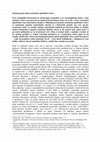
Nový Orient n. 3/2017 , 2017
Známá poutní místa arménské apoštolské církve Svět východního křesťanství je neobyčejně rozmanitý... more Známá poutní místa arménské apoštolské církve Svět východního křesťanství je neobyčejně rozmanitý a své nezastupitelné místo v něm nachází i církev, považovaná za nejstarší křesťanskou církev na světě-církev arménská apoštolská, haj arakhelakan jekegheci. Hluboká provázanost arménské apoštolské církve se samotným pojetím arménského národa je v historické paměti více než zjevná. Arménská církev je ostatně mnoha současnými badateli považována přímo za úhelný kámen konstrukce samotné arménské identity, která se do značné míry opírá právě o prvenství přiklonění se ke křesťanské víře vůbec, k němuž došlo v souladu s tradicí už na samém počátku 4. století. Fenomén poutnictví je s arménskou církví spjat už od raného středověku. Mezi nejvýznamnější poutní místa apoštolské církve patří bezesporu-vedle Jeruzaléma a jeho arménské čtvrti-svaté město Edžmiacin; v minulosti se sem řadily i některé slavné anatolské kláštery, znichž dnes zůstaly jen trosky.
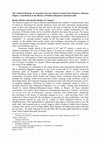
Art of the Armenian Diaspora, World Art Studies vol. XX, 2020
Border identity and specific identity of "rangers" The historical regions of Galicia (Halych) and... more Border identity and specific identity of "rangers" The historical regions of Galicia (Halych) and Ruthenia have number of characteristics, most of which are determined by specific historical events and their subsequent interpretations; some of them were influenced, inter alia, also by the type of landscape, by the ethnographic and sociological profile of the urban society, rural society, trading communities etc. The proximity of Ottoman border and its variability should be also taken into account. The notion of borderland here could be understood as a frontier zone-moveable sort of threshold between two (or even more) different worlds, languages and cultures. This phenomenon of "liminality"1 or "crossing borders" implies on the one hand rivalry, competition or even conflict, on the another hand mutual contact and exchanges; witnessing the emergence of specific stereotypical images and specific mentality (border mentality, siege mentality, inner exile, outer/territorial exile etc.). Armenians usually played in the period of 16 th and 17 th century a crucial role as mediator community; this case of border region is of course no exception. Armenian traders and merchants (khodjas, ağas) were crossing the Polish-Ottoman border by using different branches of old trade road, known as via tartarica (Tatar road), linking the Black Sea region and Baltic sea.
Cet article vise à décrire les conditions de vie dans les zones frontalières de
l’Empire ottoman ... more Cet article vise à décrire les conditions de vie dans les zones frontalières de
l’Empire ottoman du XVIe au début du XVIIIe siècle, en se focalisant sur la minorité
arménienne ; il s’appuiera sur des sources primaires (provenant des chroniqueurs
arméniens de l’époque1) et secondaires. Par zones frontalières, nous avons à l’esprit
en particulier la région d’Anatolie orientale, peuplée surtout par les Kurdes, les
Arméniens, les Grecs, les Turcs et d’autres communautés ethniques et religieuses.
Aux XVIe et XVIIe siècles, cette région représentait une frontière permanente, située
à la périphérie des grands empires (l’Empire ottoman, la Perse), où se rencontraient
traditionnellement des conceptions religieuses et politiques différentes, et dont le
morcellement ethnique et religieux est symptomatique.











Uploads
Papers by Petra Košťálová
Walachia was considered a country of mountains, rebels, brigands and Protestants. Due to its mountain passes it was perceived also as the gate to the kingdom of Hungary (seen through the eyes of Central and Western Europe). Walachia acquired the reputation of potentially dangerous and rebel country, according to the wide range of contemporary sources. The same perception could be traced from the view of emic perspective, focusing on the same attributes (but this time seen exclusively as positive features) – attributes as the emphasis on faith of forefathers, existence of specific temperament ascribed to highlanders, their tendency to patriarchal life, their notion of honour, specific sense of humour, their approach to life usually lacking respect to authorities etc. All these above mentioned characteristics, codified in contemporary chronicles, folksongs and ballads from the region of Walachia, led to the emergence of stereotypical image of highlanders (Walachians) and their enemies (Turks), which has entered a broader context of Central Europe and significantly affected this region throughout turbulent phases of 17th century till 19th century, when nationalism began to be born through the romantic visions of “warrior nations” and their neighbours.
l’Empire ottoman du XVIe au début du XVIIIe siècle, en se focalisant sur la minorité
arménienne ; il s’appuiera sur des sources primaires (provenant des chroniqueurs
arméniens de l’époque1) et secondaires. Par zones frontalières, nous avons à l’esprit
en particulier la région d’Anatolie orientale, peuplée surtout par les Kurdes, les
Arméniens, les Grecs, les Turcs et d’autres communautés ethniques et religieuses.
Aux XVIe et XVIIe siècles, cette région représentait une frontière permanente, située
à la périphérie des grands empires (l’Empire ottoman, la Perse), où se rencontraient
traditionnellement des conceptions religieuses et politiques différentes, et dont le
morcellement ethnique et religieux est symptomatique.
Walachia was considered a country of mountains, rebels, brigands and Protestants. Due to its mountain passes it was perceived also as the gate to the kingdom of Hungary (seen through the eyes of Central and Western Europe). Walachia acquired the reputation of potentially dangerous and rebel country, according to the wide range of contemporary sources. The same perception could be traced from the view of emic perspective, focusing on the same attributes (but this time seen exclusively as positive features) – attributes as the emphasis on faith of forefathers, existence of specific temperament ascribed to highlanders, their tendency to patriarchal life, their notion of honour, specific sense of humour, their approach to life usually lacking respect to authorities etc. All these above mentioned characteristics, codified in contemporary chronicles, folksongs and ballads from the region of Walachia, led to the emergence of stereotypical image of highlanders (Walachians) and their enemies (Turks), which has entered a broader context of Central Europe and significantly affected this region throughout turbulent phases of 17th century till 19th century, when nationalism began to be born through the romantic visions of “warrior nations” and their neighbours.
l’Empire ottoman du XVIe au début du XVIIIe siècle, en se focalisant sur la minorité
arménienne ; il s’appuiera sur des sources primaires (provenant des chroniqueurs
arméniens de l’époque1) et secondaires. Par zones frontalières, nous avons à l’esprit
en particulier la région d’Anatolie orientale, peuplée surtout par les Kurdes, les
Arméniens, les Grecs, les Turcs et d’autres communautés ethniques et religieuses.
Aux XVIe et XVIIe siècles, cette région représentait une frontière permanente, située
à la périphérie des grands empires (l’Empire ottoman, la Perse), où se rencontraient
traditionnellement des conceptions religieuses et politiques différentes, et dont le
morcellement ethnique et religieux est symptomatique.
Arménie Pro mnohé z nás stále neznámá země, tak trochu ztracená uprostřed hor jižního Kavkazu, mezi Černým mořem a mořem Kaspickým. Země, kterou si podle biblické tradice vybral praotec Noe, když přistál se svou Archou na hoře Ararat Země hor a stepí spálených sluncem, přezdívaná některými muzeum pod širým nebem díky bezpočtu dochovaných historických památek a Armény samotnými pak nazývaná Hajastan (země Arménů lidu Haj), Kharastan, tj. země kamenů, nebo básnicky Nairi. Takřka mystická krajina plná středověkých kostelíků a klášterů ukrytých na svazích hor, k nimž tvoří kulisu stáda ovcí nebo kroužící orli. Krajina, která ve vás vyvolá zvláštní melancholii a jejíž podobu a kouzlo si pak zpětně snadno přivoláte při poslechu tradiční arménské flétny duduku. Země otevřených a pohostinných lidí, nosících svá srdce na dlani.